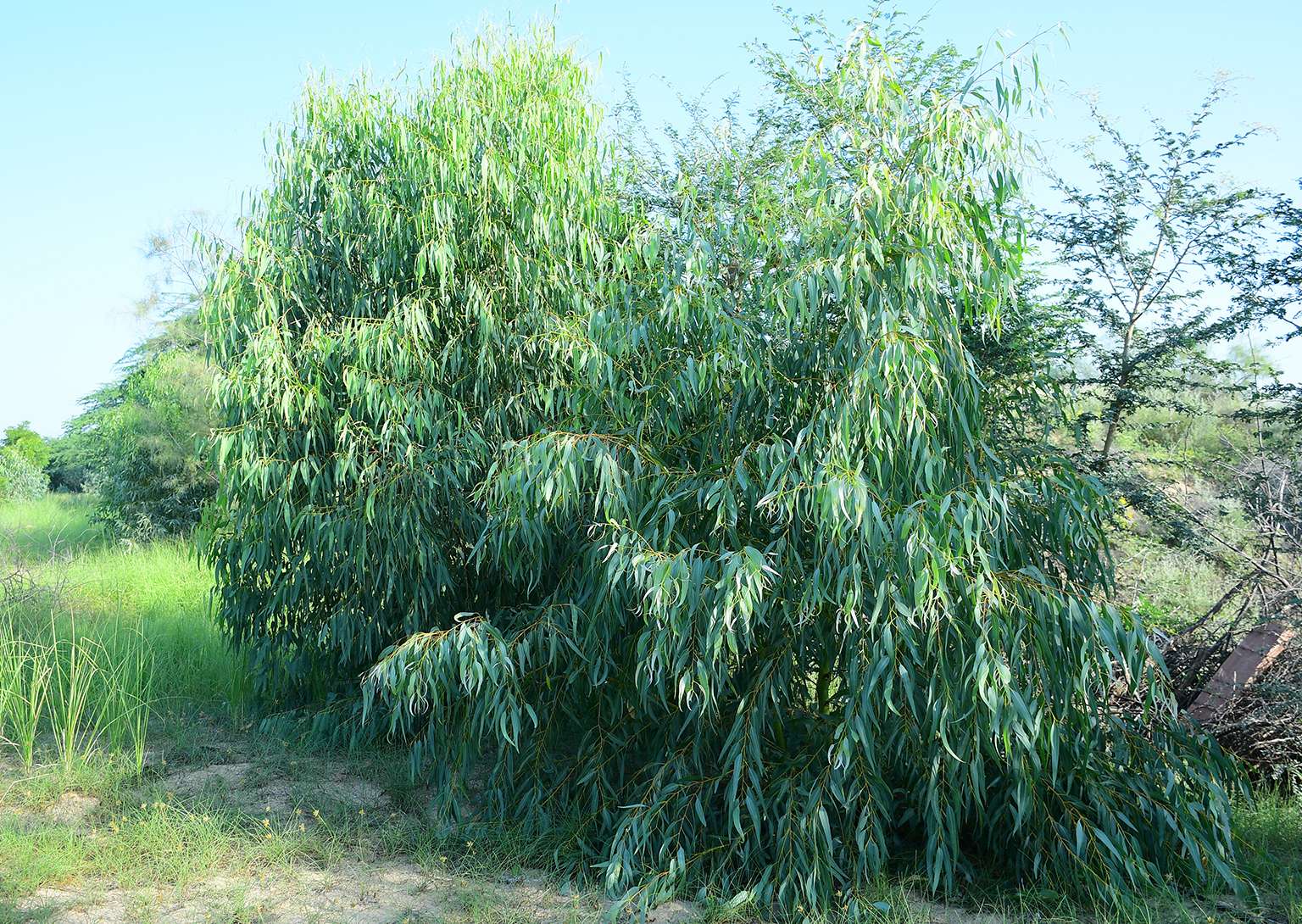Eucalyptus globulus

|
|
Eucalyptus globulus Common Names: Tasmanian Blue Gum, Southern Blue Gum,
Blue Gum Eucalyptus Scientific
Classification Kingdom: Plantae Clade: Tracheophytes Clade: Angiosperms Clade: Eudicots Clade: Rosids Order: Myrtales Family: Myrtaceae Genus: Eucalyptus Species: E. globulus Binomial Name: Eucalyptus globulus Labill. Synonyms: Eucalyptus gigantea Dehnh., Eucalyptus globulosus St.-Lag. nom. illeg. Morphological Description Eucalyptus globulus is an evergreen tree, typically 30–70 m tall, with a
straight trunk up to 2 m in diameter. Key features include: · Bark: Smooth, peeling in strips, bluish-gray to white with age · Leaves: Juvenile: ovate, bluish-green, waxy, 6–15 cm long; Adult:
lanceolate, dark green, 15–30 cm long · Flowers: Creamy white, solitary or in clusters, 2–3 cm wide · Fruit: Woody capsules, hemispherical, 1–2 cm, glaucous It sheds bark annually,
revealing a striking mottled trunk (Brooker & Slee, 2006). Distribution and Habitat Eucalyptus globulus thrives in: · Native Range: Southeastern Australia (Tasmania, Victoria) · Cultivated Range: Mediterranean, South America, India,
California · Habitat: Forests, plantations, coastal hills; 0–1,000 m altitude · Soil/Climate: Moist, well-drained soils, temperate to subtropical,
rainfall 500–2,000 mm It adapts well to
cultivation, growing rapidly in suitable climates (Elliot & Jones, 1986). Ethnopharmacology Eucalyptus globulus, commonly known as the blue gum tree, is widely recognized for
its medicinal properties, primarily attributed to its essential oil, which is
rich in eucalyptol (1,8-cineole). Traditionally and in modern herbal medicine,
it is used as a respiratory remedy for treating coughs, colds, bronchitis,
sinusitis, and asthma due to its expectorant, decongestant, and
anti-inflammatory effects. The leaves and oil also possess strong
antibacterial, antifungal, and antiviral properties, making them useful in
treating wounds, infections, and oral health issues like gingivitis.
Additionally, Eucalyptus globulus has analgesic and antipyretic properties,
providing relief from muscle pain and fever when used topically. Its
antioxidant and insect repellent qualities further enhance its value in
traditional and alternative medicine, though the pure essential oil should be
used with caution, especially in children, due to potential toxicity if
ingested in large amounts. · Antiseptic: Aboriginal use for wounds; oil inhibits S. aureus (MIC 0.25 mg/mL) (Cimanga et al., 2002). · Respiratory Relief: Leaf infusions in Tasmania for colds;
eucalyptol reduces cough in humans (Ben-Arye et al., 2011). · Anti-inflammatory: Leaf poultices in India for pain; reduces
edema in rats (40% at 200 mg/kg) (Silva et al., 2003). · Antimicrobial: Oil used in Brazil for infections; active against E. coli (MIC 0.5 mg/mL) (Bachir & Benali,
2012). · Fever Reduction: Leaf tea in Aboriginal practice;
antipyretic in mice (30% at 100 mg/kg) (Sadlon & Lamson, 2010). Phytochemistry Medicinal properties are
linked to: · Eucalyptol (1,8-cineole): 60–85%, expectorant, antimicrobial
(Cimanga et al., 2002). · α-Pinene: 5–15%, anti-inflammatory (Silva et al., 2003). · Flavonoids: Antioxidant, wound healing (Boulekbache-Makhlouf et al.,
2010). · Tannins: Astringent, antiseptic (Sadlon & Lamson, 2010). ⚠ Toxicity Profile: Oil safe at <0.05 mL/kg; ingestion >5 mL
causes nausea, seizures (LD₅₀ 2,480 mg/kg in rats). Avoid in children under 6
(Darben et al., 1998). Additional Information · Eucalyptus Oil: Used in cough drops, ointments, perfumes;
steam distilled from leaves (Elliot & Jones, 1986). · Timber: Fast-growing, used for pulp, furniture, fuel (Brooker &
Slee, 2006). · Environmental Impact: Eucalyptus globulus is known for its high
water consumption, with deep root systems capable of tapping into groundwater
reserves, potentially lowering water tables esearch indicates a decrease of
approximately 100 mm/year in groundwater levels following such land-use changes
(Mattos et al., 2019). · Cultural Use: Aboriginal water source from roots; koala food (Elliot &
Jones, 1986). References
External Links More Pictures |
|
| Compounds of Eucalyptus globulus | |
| References |